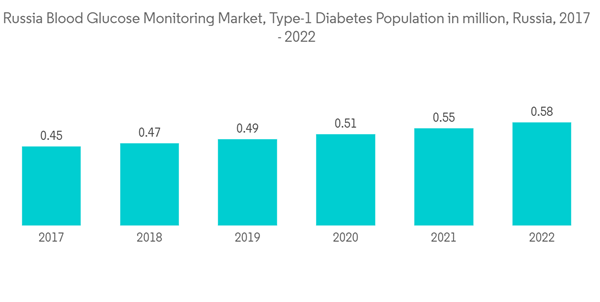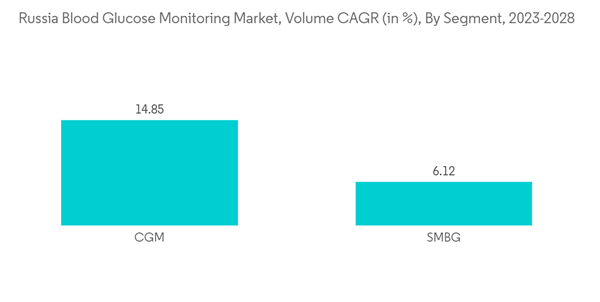The COVID-19 pandemic has resulted in premature deaths, particularly among the elderly, in its first year of existence. Russia has the ninth-highest number of confirmed COVID-19 cases in the world. The majority of COVID-19 deaths were caused by the co-occurrence of two or more chronic conditions in the same person. Several studies have found that chronic diseases such as diabetes are linked to poor outcomes in COVID-19 patients.
Diabetic drugs are medications designed to stabilise and control blood glucose levels in diabetics. Diabetic drugs have been proposed as potential treatments for diabetic patients infected with SARS-CoV-2 during the COVID-19 pandemic. The rapidly increasing incidence and prevalence of diabetic patients, as well as healthcare expenditure, indicate that diabetic care products are being used more frequently. According to Roscongress, Russia ranks fifth in the world in terms of the number of people aged 20 to 79 who have diabetes mellitus. Furthermore, during COVID-19, the mortality rate among diabetic patients increased by 22%.
The rate of newly diagnosed Type 1 and Type 2 diabetes cases is seen to increase, mainly due to obesity, unhealthy diet, and physical inactivity. The rapidly increasing incidence and prevalence of diabetic patients and healthcare expenditure are indications of the increasing usage of diabetic care products. In May 2021, the World Health Assembly agreed on a Resolution on strengthening the prevention and control of diabetes. It recommends action in areas including increasing access to insulin; promoting convergence and harmonization of regulatory requirements for insulin and other medicines and health products for the treatment of diabetes; and assessing the feasibility and potential value of establishing a web-based tool to share information relevant to the transparency of markets for diabetes medicines and health products.
Therefore, owing to the aforementioned factors the studied market is anticipated to witness growth over the analysis period.
Russia Blood Glucose Monitoring Market Trends
Increasing Type-1 diabetes population across Russia
According to IDF, to reduce the diabetes epidemic in the country, the Russian government needs to fully implement a National Diabetes Plan that establishes a state budget that guarantees diabetes care to all Russian citizens. Russia is working towards improving the reimbursement system for all aspects of diabetes care, limiting out-of-pocket payments, and preventing households from incurring catastrophic expenditures. Also, implementing a national screening program to improve the early identification of disturbed carbohydrate metabolism and creating a specialized diabetes health service under the Ministry of Health of the Russian Federation.The COVID-19 pandemic emphasized the need for good glycemic control in patients with diabetes, largely because most observational studies have reported that poorly controlled diabetes is associated with a higher risk for hospitalization and death from a viral illness. The frequency of monitoring glucose levels depends on the type of diabetes, which varies from patient to patient. Type-1 diabetic patients must check their blood glucose levels regularly, monitor their blood glucose levels, and adjust the insulin dosing accordingly.
As a result of the factors above, the growth of the studied market in Russia is anticipated.
Continuous Glucose Monitoring Holds Highest Market Share in Russia Blood Glucose Monitoring Market.
Continuous glucose monitoring sensors use glucose oxidase to detect blood sugar levels. Glucose oxidase converts glucose to hydrogen peroxidase, which reacts with the platinum inside the sensor, producing an electrical signal to be communicated to the transmitter. Sensors are the most important part of continuous glucose monitoring devices. Technological advancements to improve the accuracy of the sensors are expected to drive segment growth during the forecast period.The current CGM devices show a detailed representation of blood glucose patterns and tendencies compared to a routine check of glucose levels at set intervals. These technologies overcome many of the limitations of self-monitoring blood glucose (SMBG) by fingerprick, allowing it to go beyond HbA1c to check glucose control in diabetes. Furthermore, the current continuous glucose monitoring devices can either retrospectively display the trends in blood glucose levels by downloading the data or give a real-time picture of glucose levels through receiver displays. The continuous glucose monitoring (CGM) sensors have opened new scenarios to assess, off-line, the effectiveness of individual patient therapeutic plans and stimulated the development of innovative online applications, such as hypo/hyperglycemia alert systems and artificial pancreas closed-loop control algorithms. Continuous glucose monitoring devices are becoming cheaper with the advent of new technologies.
The increased diabetic prevalence in Russia and the above factors will likely drive segment growth during the forecast period.
Russia Blood Glucose Monitoring Industry Overview
The blood glucose monitoring market is highly fragmented, with few major manufacturers present in the market. The CGM devices market is dominated by major players like Dexcom, Medtronics, Abbott, and Senseonics. The market for BGM devices comprises more generic players like Roche, LifeScan, Arkray, Ascensia, etc. Technological innovations in the recent past helped companies to strengthen their market presence.Additional Benefits:
- The market estimate (ME) sheet in Excel format
- 3 months of analyst support
This product will be delivered within 2 business days.
Table of Contents
Companies Mentioned (Partial List)
A selection of companies mentioned in this report includes, but is not limited to:
- Abbott Diabetes Care
- Roche Holding AG
- LifeScan
- Dexcom Inc.
- Medtronic PLC
- Arkray Inc.
- Ascensia Diabetes Care
- Agamatrix Inc.
- Bionime Corporation
- Acon Laboratories Inc.
- Trivida Functional Medicine
- Senseonics










